Gear Advice: Footwear for Pohnpei
Zories / Flip-Flops
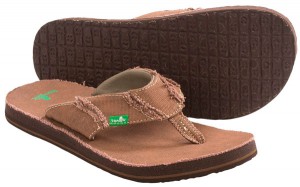
PROS: They’re ultra-easy to take on and off. Your feet are completely exposed to the air and dry quickly.
CONS: When wet or muddy, your feet slide around from side to side and from front to back. Straps are often too weak to handle rough treatment and frequently break. Zories get sucked right off your feet in swift-moving water, mucky sand, or oozy mud. They have absolutely no traction capabilities. Your feet are completely unprotected.
THE VERDICT: Flip-flops are great when cruising around town or hanging on the boat or beach, and that’s about it.
Tennis Shoes
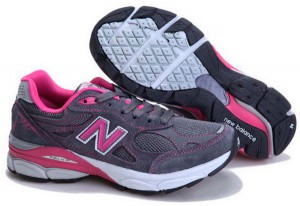
PROS: They’re light. They breathe better and tend to have more flexible soles than heavier footwear, allowing your feet marginally better traction. The toes, tops, and sides of your feet are better protected from scrapes and bangs than with sandals or FiveFingers.
CONS: Tennis shoes have no ankle support. They inevitably get soaked in Pohnpei’s wet environment, and once wet, your feet stay wet. Furthermore, the shoes aren’t going to dry out between hikes in the humidity — even on sunny days. Though soles are thinner and more flexible than hiking boots or Teva-style sport sandals, the type of sole material and tread varies from shoe to shoe. By and large, tennis shoes don’t have tread that performs well on wet rocks or muddy slopes — the most common type of terrain Pohnpei hikers encounter. Shoes are easily pulled right off your feet in deep mud.
THE VERDICT: Tennis shoes are fine for short, easy hikes on roads or well-established gravely trails.
Cloth Hiking Boots
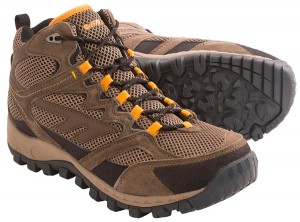
PROS: They’re only slightly heavier than tennis shoes. Soles and tread tend to be better designed for hiking in rough terrain than tennis shoes or sandals. They provide good ankle support. Your feet and ankles are protected from scrapes and bangs.
CONS: Breath-ability is poor. Your feet get wet and stay wet. The thickness of the soles makes it harder for them to adhere to wet, curved surfaces, such as river rocks. The deeper tread is mostly ineffective in muddy conditions as the grooves simply fill with mud. Just like tennis shoes, in deep mud, they can be pulled right off your feet.
THE VERDICT: Cloth hiking boots aren’t particularly useful on an ultra-wet tropical island. It’s best to leave them at home.
Hard-Shell Hiking Boots
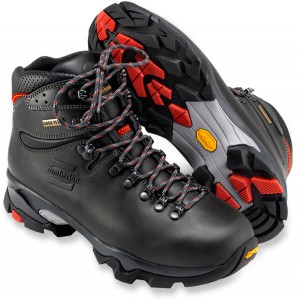
PROS: They provide maximum ankle support and foot and ankle protection.
CONS: They’re unnecessarily heavy and wear you out faster than lighter shoes. The soles are thick and inflexible — highly undesirable when crossing slick rocks in rivers or scrambling up muddy mountainsides. They aren’t breathable at all; even if they’re fully waterproofed, your feet will end up soaked by sweat anyway. They’re absolutely impossible to deal with in deep, oozy mud.
THE VERDICT: Hard-shell boots are a very poor choice for this environment.
Teva-Style Sport Sandals
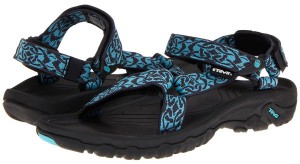
PROS: The open-air style allows your feet the greatest opportunity to dry out. There are less places for sand and grit to get stuck.
CONS: Your toes, heels, and the sides of your feet are completely unprotected and can be battered by rocks and roots. When wet, feet tend to slide around on the sole. Blisters around the straps are problematic on anything but short hikes. The Velcro fasteners get caught on vines and other things and pulled open. The thick, inflexible soles are nearly as bad as hard-shell boots when it comes to traction. For footwear designed with rivers in mind, they’re remarkably poor at adhering to wet rocks slimed with algae. They tend to become mired in deep mud like what you find in mangrove swamps.
THE VERDICT: Sport sandals work well when paddling, walking around town, or doing short, relatively-flat hikes on roads or well-established trails.
FiveFingers
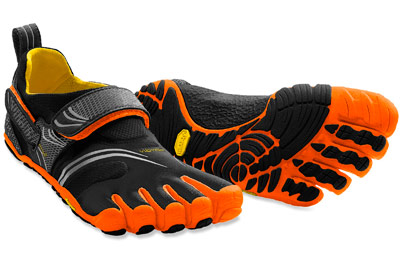
PROS: The revolutionary design concept centers around research that has shown that balance and traction are significantly improved by having the use of your toes and letting your feet flex and mold themselves to whatever surface they move across. Thin, soft soles allow maximum flexibility and adhere well to wet rocks and other surfaces. “Free” toes can dig into mud for better traction, and because they fit like a second skin, they won’t come off your feet. They’re ultra-light. Thin material or mesh allow your feet plenty of access to air.
CONS: There’s no ankle support and minimal protection from the environment; toes, feet, and ankles can take a brutal beating from rocks and roots. You can’t just jump right into things; you have to break in FiveFingers, take some time to allow your feet to get used to full contact with the terrain, and learn to walk with greater care and precision. They are designed to fit like a glove, and consequently, are very difficult to put on. In sandy conditions, grit gets inside the heels and rubs the skin raw.


